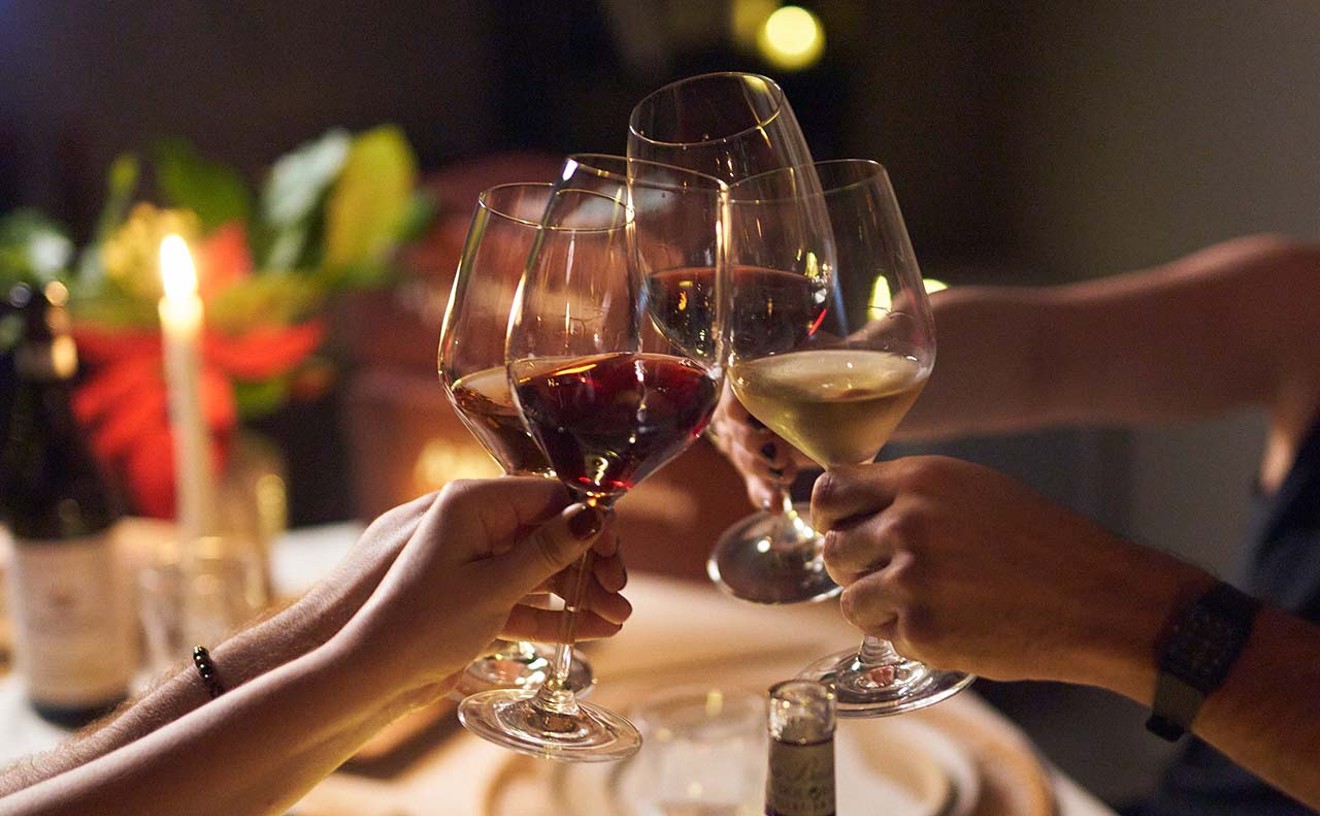For about ten seconds.
It didn't take very long to identify a major problem with highlighting particular restaurants and their name-making chefs in the Miami area. Simply put, the chefs couldn't stay put. Van Aken had already departed a Mano and hadn't yet opened Norman's. Rodriguez left Yuca to place Patria on the Manhattan map. Haas bounced from the Bistro to BANG, then was seduced by nationally acclaimed chef Mark Miller and went to work with him in Washington, D.C., and San Francisco. Simon ran from the Raleigh to Starfish to a Dennis Max property before leaving South Beach for good.
Other serious factors to consider: the highly styled, overly complicated recipes these chefs liked to produce. Clearly the book couldn't be aimed at the novice cook. Nor, for space reasons, could in-depth explanations be provided for some extremely labor-intensive dishes. Exotic ingredients would prove hard to locate. And finally, let's put it on the line: The chefs' individual egos, I found, were challenging.
So I abandoned the project. Only to discover an eerily similar book, The Food of Miami, written and compiled by The [James] Beard Foundation's co-founder and vice president Caroline Stuart, on the shelves of Books & Books last week.
Am I bitter? Nah. I wasn't the right chick for the job, and actually I'm glad Stuart had the fortitude I didn't. The more cookbooks published about Miami, the better a culinary destination we seem.
Visually speaking, Stuart's glossy, 140-page book is stunning, with photos by Jacob Termansen and styling by Christina Ong. A series of introductory essays by additional writers provides a pretty good history of both South Florida and Miami in particular. And the writing is clear and concise, though clichéd prose such as "the road to Miami was built of shattered dreams" occasionally jars the jaded reader.
But The Food of Miami eventually proves to be a better coffee-table book than it is a cookbook. For one thing, it falls victim to the peripatetic nature of Miami eateries. Of the 34 restaurants mentioned in one of the essays, called "Dining Out in Miami," one-fifth already has gone out of business. In the recipe text, which lists the chef's name and restaurant under the dish, two chefs -- Johnny Vinczencz and Pascal Oudin -- have departed the eateries in question, and another, Norma's on the Beach!, has dropped out of the scene (and become Ortanique on the Mile).
For another, the book is inconsistent. Most of the recipes were written by chefs, but a few were penned by Stuart herself, and these carry no attribution. Overall it makes it seem as if these were added as filler to fluff up the book. Certainly they couldn't have been intended to round out the dishes. Despite the variety of recipes, from Todd Weisz's (Turnberry Isle Resort & Club) crisp Chilean sea bass to Norman Van Aken's Mongolian-spiced veal chops, there isn't a single one for the tame game frequently found on South Florida menus, such as lamb, venison, or even good ol' gator.
As for the recipes themselves, in general they're complex. I'm not a trained cook but I'm no novice either, so I know that the secret to creating a successful dish is the same method used to solve a math problem: Read the whole thing through first, then tackle it one step at a time. So I wasn't surprised, when I went to make the corn-zucchini salsa for Paul Gjertson's (Deering Bay Yacht & Country Club) yellowtail snapper, that the corn was supposed to have been roasted on the ears first, and that the chopped red onions needed to be marinated in red wine vinegar and sugar for a half-hour. But my husband, who made Allen Susser's mango sour cream cake (his first attempt at baking) was thrown by a confusing error in the recipe directions concerning the streusel filling. Fortunately the cake turned out beautifully despite what we are politely calling a "modification."
I also wonder if Stuart tested these recipes. In the introduction to Jan Jorgensen's and Soren Bredahl's (Two Chefs) goat and Florida lobster cassoulet, she writes: "Goat meat and lobster may seem unusual bedfellows, but they combine well in this hearty dish." Now don't get me wrong -- I'm a tremendous fan of Two Chefs -- but this is hardly a complementary combo. I followed the recipe exactly, and came up with a tough, watery stew that my guests cheerfully pronounced inedible.
Stuart also could have used a good copy editor. Soren Bredahl's name is spelled "Brendahl," and in the acknowledgments in back, male chefs are given the courtesy title of "Mr.," while female chefs are referred to by last name only. She also calls the very paper you are reading New Times Magazine -- and that's just plain unforgivable. Stuart may head up The Beard Foundation, but it's unlikely The Food of Miami will reap the James Beard Award for cookbooks.










